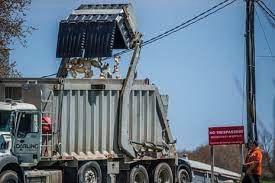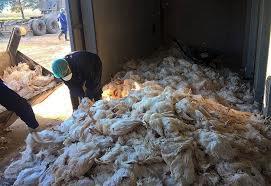
As the fourth quarter total of layer hens depopulated as a result of HPAI passes the ten-million mark in eight weeks, there is concern that the infection is now both seasonally and regionally endemic. USDA-APHIS has demonstrated variable efficiency in response to outbreaks with delays in depopulation and disposal evident in California albeit with a quicker response in the Midwest. Rapid depopulation of affected farms within high-risk areas is essential to prevent multiplication and dissemination of virus either through defective biosecurity or most likely by the airborne route over distances of up to a mile depending on weather conditions.
The critical period relates to immediate post-incubation, approximately five days after introduction of infection, encompassing the period before onset of high mortality. Failure to suspect or recognize an infection requiring an immediate imposition of a quarantine may have serious implications for regional spread. Delay in confirming a diagnosis of HPAI sharply increases the possibility of dissemination of virus and possible infection of farms in close proximity. Prompt diagnosis using available PCR assay now offered by all poultry-state diagnostic laboratories is essential to contain the infection. This is especially important in areas with a high population of laying hens either as self-contained complexes or more importantly contract farms receiving feed and supplying eggs to a packing plant. In the case of in-line egg production complexes, their structure with an on-site packing plant and a feed mill might reduce the risk of both introduction and dissemination of infection when operated with high standards of structural and operational biosecurity. In contrast, contract farms supplying eggs to a packer or breaker are at a higher risk due to the frequency of feed deliveries, egg collection and visits by flock service persons.
 A recent outbreak highlights the need for constant monitoring of production parameters to recognize the emergence of HPAI at an early stage in the progress of an infection. On suspicion of an outbreak, daily PCR assays of cloacal and tracheal swabs from recently dead or moribund hens or pullets should be submitted to either confirm or eliminate the diagnosis. In the specific case, a contractor with two houses with a total capacity of 500,000 hens reported elevated mortality to the integrator on December 2nd. A Company service person obtained swabs from a few dead birds for submission to a state diagnostic laboratory with a negative diagnosis for HPAI. This farm was, undergoing an outbreak of coryza that was previously confirmed by PCR. Mortality in the house containing 150,000 hens continued to escalate and water consumption dropped successively by 25 and then 50 percent over the period extending to December 7th. Mortality increased from 3,600 hens (2.4 percent per day) on December 7th to 8,000 (6 percent of the remaining flock) on December 10th. The integrator who supplied feed and owned the flock, was informed of the status of the flock each day by the contractor who expressed concern over rising mortality. On December 12th, a service person collected tracheal swabs that were submitted to the state diagnostic laboratory yielding a positive diagnosis of HPAI. This resulted in State and Federal control measures including quarantine and depopulation.
A recent outbreak highlights the need for constant monitoring of production parameters to recognize the emergence of HPAI at an early stage in the progress of an infection. On suspicion of an outbreak, daily PCR assays of cloacal and tracheal swabs from recently dead or moribund hens or pullets should be submitted to either confirm or eliminate the diagnosis. In the specific case, a contractor with two houses with a total capacity of 500,000 hens reported elevated mortality to the integrator on December 2nd. A Company service person obtained swabs from a few dead birds for submission to a state diagnostic laboratory with a negative diagnosis for HPAI. This farm was, undergoing an outbreak of coryza that was previously confirmed by PCR. Mortality in the house containing 150,000 hens continued to escalate and water consumption dropped successively by 25 and then 50 percent over the period extending to December 7th. Mortality increased from 3,600 hens (2.4 percent per day) on December 7th to 8,000 (6 percent of the remaining flock) on December 10th. The integrator who supplied feed and owned the flock, was informed of the status of the flock each day by the contractor who expressed concern over rising mortality. On December 12th, a service person collected tracheal swabs that were submitted to the state diagnostic laboratory yielding a positive diagnosis of HPAI. This resulted in State and Federal control measures including quarantine and depopulation.
The integrator displayed an egregious level of negligence. They were aware that their affected contract farm was in close proximity to other poultry farms some of which held up to a million hens and were operated by different farmers and companies. Failure to rapidly respond to the outbreak by obtaining a diagnosis and initiating depopulation placed at least eight million hens in contiguous counties at risk. At the time of writing, other farms in the area are apparently unaffected, but the understandable level of anxiety and concern is self-evident. APHIS is coducting surveillance testing within the control area. Management on nearby farms are conducting diagnostic swabbing of representative dead hens at daily intervals and have intensified their existing levels of operational biosecurity
Precautions suggested to protect flocks under conditions of high risk include:-
- Shower-in-shower-out procedures, with on-site laundry of protective clothing. This presumes appropriate prior investment in structural biosecurity.
- Donning site footwear from the exit of a biosecurity module with a change on entry to houses to prevent tracking of virus that might be deposited on roadways. Again this presumes prior investment in impervious roads, drains and parking areas.
- Cessation of mowing or soil cultivation within or in the vicinity of the perimeter of the farm
- Daily monitoring of mortality, water and feed intake with prompt evaluation to detect deviations from normal patterns,
- Thorough decontamination of dedicated feed delivery trailers or egg-collection vehicles in purpose-designed or commercial vehicle wash. Simply rinsing the outer wall of tires or "sprinkling" trailers with disinfectant is essentially ‘make-belief’ biosecurity
- Appropriate biosecurity procedures for drivers of feed delivery and egg-collection vehicles is required to prevent introduction of infection or dissemination of virus from infected but non-diagnosed flocks before onset of appreciable mortality.
USDA- APHIS has been negligent in failing to release reports on structured epidemiologic investigations of outbreaks on laying complexes in 2022. The Agency has not shared their interpretation of the molecular assays conducted on isolates from commercial flocks and migratory birds to date. Notwithstanding a lack of guidance from USDA-APHIS there is sufficient knowledge regarding how HPAI is spread and its effect on flocks to have resulted in a more appropriate and positive response by the integrator to a report of mortality on the contract farm. The integrator concerned employs veterinarians and according to information provided none of them visited the farm to clinically evaluate the severity of the situation. Neither did they contact the contractor remotely on a regular daily basis to monitor and assess mortality and water consumption or order additional assays for AI. This lack of professional diligence is inexcusable given the potential for extensive infection of flocks in the county.
Egg producers, packers, integrators and breakers have a mutual obligation to detect and respond to outbreaks of avian influenza. Allowing birds to die at high level over seven consecutive days without availing of available diagnostic resources represents negligence and could result in subsequent civil litigation.
As we go forward into 2024 with continued risk of HPAI, all stakeholders in egg production have a collective responsibility to ensure that outbreaks are detected quickly in order to limit lateral spread.